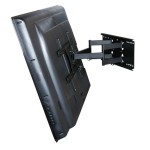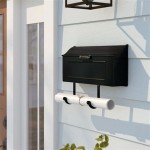Small Utility Sink Wall Mount: A Comprehensive Guide
The small utility sink wall mount is a practical and space-saving fixture for a variety of settings, from residential garages and laundry rooms to commercial workshops and janitorial closets. This type of sink offers a convenient place to handle messy tasks, cleaning, and rinsing without taking up valuable floor space. Understanding the features, benefits, installation considerations, and maintenance requirements of a small utility sink wall mount is crucial for making an informed purchase and ensuring long-term usability.
These sinks are often chosen when square footage is limited or when a flexible installation is desired. Unlike traditional floor-standing sinks, wall-mounted models can be placed at a customized height to accommodate individual users or specific work requirements. This adaptability, coupled with their compact size, makes them a versatile solution for both professional and domestic environments.
Key Advantages of a Small Utility Sink Wall Mount
Several advantages contribute to the popularity of small utility sink wall mounts. These benefits range from space optimization to improved hygiene and accessibility.
Space Efficiency: Perhaps the most significant benefit is the space-saving design. By mounting the sink directly to the wall, the floor beneath remains clear, allowing for easier cleaning and potentially freeing up space for storage or other equipment. This is particularly beneficial in smaller areas like laundry rooms or cramped garages where every inch of floor space is valuable.
Customizable Height: Wall mounting allows for the sink to be installed at a specific height that is comfortable for the user. This is especially helpful in households with individuals of varying heights or in commercial settings where ergonomic considerations are important. Adjusting the height reduces strain and makes tasks more comfortable, contributing to a safer and more efficient workspace.
Improved Hygiene: With no floor obstructions, cleaning around the sink becomes significantly easier. The ability to sweep or mop directly underneath the sink prevents the accumulation of dirt, debris, and moisture, thereby contributing to a more hygienic environment. This is especially important in areas where cleanliness is paramount, such as workshops or janitorial closets.
Versatility: Small utility sinks are incredibly versatile. They can be used for a wide range of tasks, including washing paintbrushes, rinsing off tools, cleaning vegetables, or even bathing small pets. Their compact size makes them suitable for a variety of applications, and the wall-mounted design allows them to be installed in locations where a traditional sink would not be feasible.
Factors to Consider Before Purchasing
Before purchasing a small utility sink wall mount, several factors must be carefully considered to ensure a suitable choice for the intended environment.
Material: The material of the sink is a crucial determinant of its durability, resistance to damage, and overall lifespan. Common materials include stainless steel, polypropylene, and porcelain. Stainless steel is known for its strength, resistance to corrosion, and ease of cleaning, making it a popular choice for heavy-duty applications. Polypropylene is a lightweight and affordable option that is resistant to chemicals and stains. Porcelain is a classic choice that offers a smooth, easy-to-clean surface but is more susceptible to chipping or cracking.
Size and Dimensions: Selecting the appropriate size is essential for both functionality and space optimization. Measure the available wall space carefully and consider the types of tasks that will be performed in the sink. A sink that is too small may not be adequate for the intended uses, while a sink that is too large may overwhelm the space and make it difficult to maneuver.
Weight Capacity: Ensure that the wall mount and the wall itself are capable of supporting the weight of the sink when it is full of water and any items placed inside. Consult the manufacturer's specifications to determine the weight capacity of the sink and the wall mount. It may be necessary to reinforce the wall with additional support if it is not strong enough to handle the load.
Faucet Compatibility: Consider the type of faucet that will be used with the sink. Some sinks come with pre-drilled holes for a faucet, while others require a separate wall-mounted faucet. Ensure that the faucet is compatible with the sink and that the water supply lines are easily accessible. The spout height and reach should also be considered to ensure that the faucet is suitable for the intended tasks.
Drainage: The sink must have an adequate drainage system to prevent clogs and ensure proper water flow. Check the drain size and ensure that it is compatible with the existing plumbing. Consider adding a strainer or basket to the drain to catch debris and prevent it from entering the pipes.
Installation Considerations for Wall Mount Sinks
Proper installation is essential for the safety and functionality of a small utility sink wall mount. Incorrect installation can lead to structural damage, water leaks, and other problems. Detailed planning and adherence to best practices are critical.
Wall Structure: The structural integrity of the wall is paramount. The wall must be strong enough to support the weight of the sink, water, and any items placed inside. If the wall is constructed of drywall, it may be necessary to reinforce it with plywood or backing boards to provide adequate support. Concrete or brick walls are generally stronger and more suitable for supporting heavier sinks.
Mounting Hardware: Use appropriate mounting hardware that is designed for the type of wall and the weight of the sink. Heavy-duty brackets and anchors are essential for ensuring a secure and stable installation. Follow the manufacturer's instructions carefully when installing the mounting hardware.
Plumbing Connections: Proper plumbing connections are essential for preventing water leaks and ensuring proper drainage. Use Teflon tape or pipe sealant to create a watertight seal on all threaded connections. Ensure that the drain is properly aligned and securely connected to the plumbing system. Consider hiring a professional plumber to handle the plumbing connections if you are not comfortable working with plumbing.
Leveling: Ensure that the sink is perfectly level before securing it to the wall. Use a level to check the horizontal and vertical alignment of the sink. Adjust the mounting brackets as necessary to achieve a level surface. A level sink will drain properly and prevent water from pooling in one area.
Height Adjustment: Before securing the sink permanently, test the height to ensure that it is comfortable for the intended users. Adjust the height as necessary to accommodate different individuals or specific work requirements. Consider the height of any nearby countertops or appliances to ensure that the sink is at a comfortable working height.
Safety Precautions: Wear appropriate safety gear, such as safety glasses and gloves, when installing the sink. Use caution when working with power tools and plumbing connections. Turn off the water supply before disconnecting any plumbing lines. If you are not comfortable performing any of the installation steps, hire a professional to do the work.
Maintenance and Care for Longevity
Regular maintenance and proper care will extend the lifespan of a small utility sink wall mount and keep it looking its best. Different materials require different cleaning approaches.
Regular Cleaning: Clean the sink regularly with a mild soap and water solution. Avoid using abrasive cleaners or scouring pads, as they can scratch the surface of the sink. Rinse the sink thoroughly after cleaning and dry it with a soft cloth.
Stain Removal: Remove stains promptly to prevent them from becoming permanent. Use a specialized cleaner designed for the material of the sink. For example, stainless steel cleaners can remove water spots and fingerprints, while porcelain cleaners can remove stains from coffee or tea.
Drain Maintenance: Clean the drain regularly to prevent clogs. Remove any debris from the strainer or basket and flush the drain with hot water. Consider using a drain cleaner periodically to dissolve any buildup of grease or hair.
Preventing Corrosion: If the sink is made of stainless steel, prevent corrosion by regularly cleaning and drying the surface. Avoid using harsh chemicals or abrasive cleaners, as they can damage the protective layer of the stainless steel. Apply a stainless steel polish periodically to maintain the shine and prevent rust.
Addressing Leaks: Inspect the plumbing connections regularly for leaks. If a leak is detected, tighten the connections or replace the washers as needed. If the leak persists, hire a professional plumber to diagnose and repair the problem.
Protecting the Surface: Protect the surface of the sink from scratches and dents by using a sink mat or a cutting board when washing dishes or handling sharp objects. Avoid dropping heavy objects into the sink, as this can cause damage.
By adhering to these maintenance and care guidelines, the small utility sink wall mount will remain functional and aesthetically pleasing for years to come, providing a valuable and convenient addition to any space.

Cambridge Resources 19 Gallon White Wall Mount Utility Tub With Faucet

Allen Roth 23 98 In X 18 1 Basin White Wall Mount Utility Tub With Drain Mc 20405 At Com

Alape Bucket Sink Wall Mounted Small Service Glazed Steel Utility With Overflow Dark Black Trim

Plastic Wall Mounted Utility Sink Tub With Hot Cold Faucet

Eridanus Mason 8 Gal 16 In D X 21 W Wall Mount Laundry Utility Sink Crisp White With Basket Strainer Eri Us 201 The Home

Randolph Morris 22 Inch Cast Iron High Back Deep Utility Sink Lg22sink Bi Biscuit

Kohler Wall Mount Utility Sinks At Com

Porcelain Wall Mount Utility Sink

Kingston Brass Petra Galley Gclws22187 22 Inch X 18 Cast Iron Wall Mount Utility

Eridanus Mason 15 Gal Wall Mount Laundry Utility Sink Crisp White








